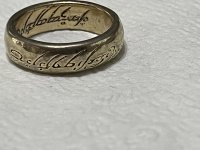Seems like it would be easier after digging a hole to use a pinpointer and see if the metal is still in the hole or in the plug.
I'm trying to learn.
Is this the proper way hunt or is there a better way ?
I also saw those probes, how well do those work in finding things. Seems like it would be easy to miss.
What is the best way to find an item when it's buried in dirt ?
What steps do you go thru ?
Thanks
I'm trying to learn.
Is this the proper way hunt or is there a better way ?
I also saw those probes, how well do those work in finding things. Seems like it would be easy to miss.
What is the best way to find an item when it's buried in dirt ?
What steps do you go thru ?
Thanks







